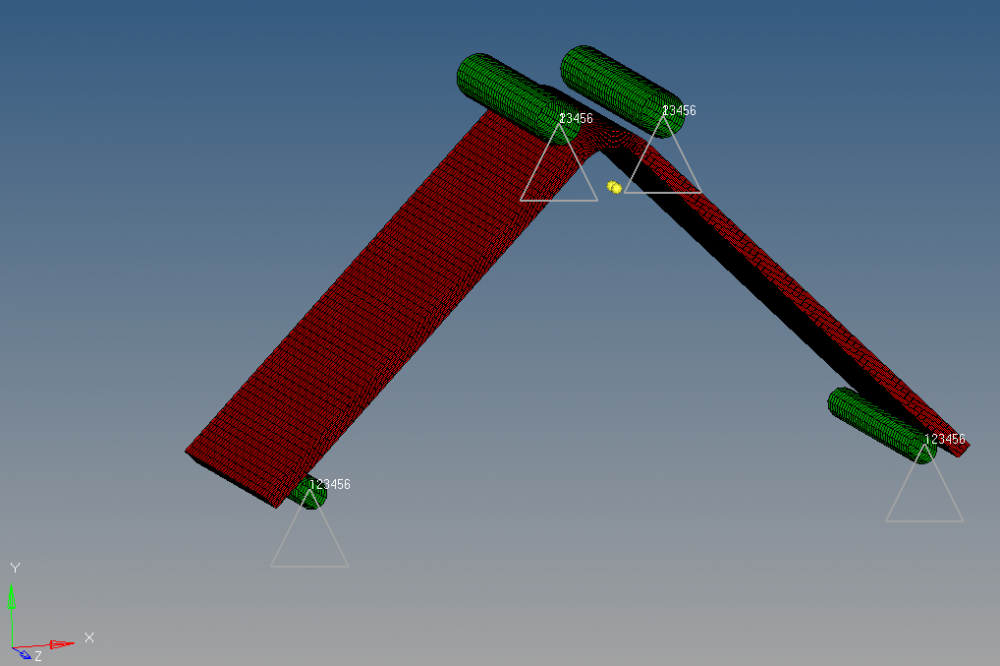Hello, Everyone!
I tried to use free shape optimization to minimize interlaminar tensile stress of L-shaped composite structure subjected to four point bending. I have created 3D element model, used MAT9ORT and PSOLID to give properties. The enforced displacement has been given. I have checked element normals and material orientation. The element normals is perpendicular to the curve surface. The material orientation is along with curve surface. However, when I check the stress results, the normal stress is totally wrong. I think maybe the material orientation is wrong.
So anyone knows how to set up the material orientation for 3D L-shaped composite structure? Besides, I want to know how to choose interlaminar tensile stress as response in free shape optimization process?
I tried the following method:
Analysis-optimization-response-static stress-props, choose PSOLID-normal y.
Is this method accurate? If not, please tell me how to do?
<?xml version="1.0" encoding="UTF-8"?>